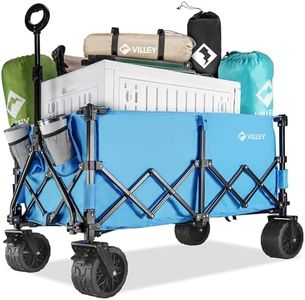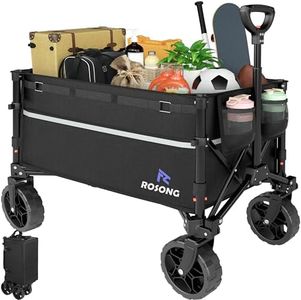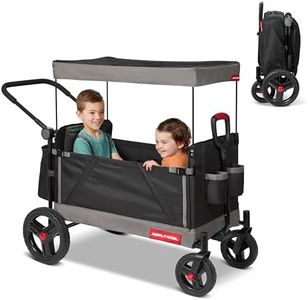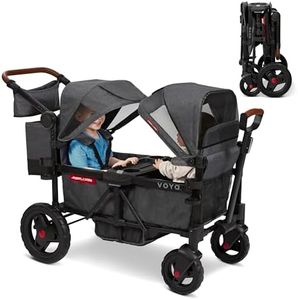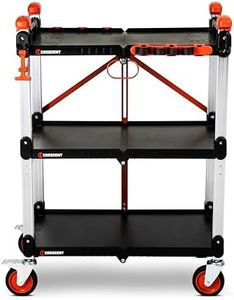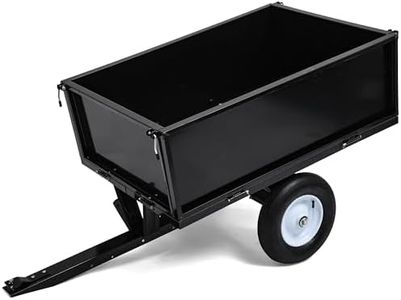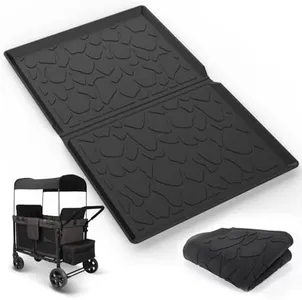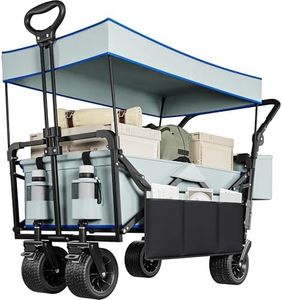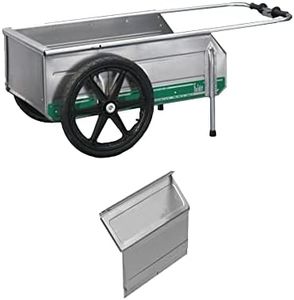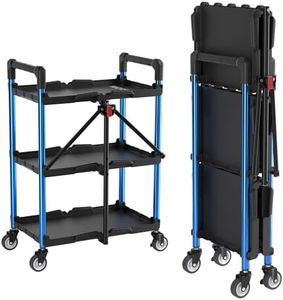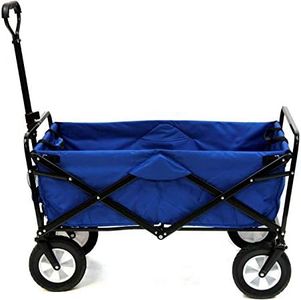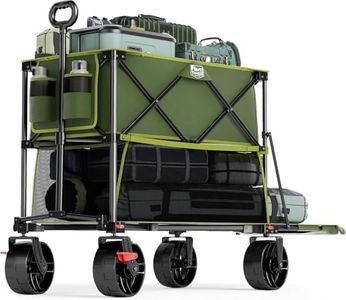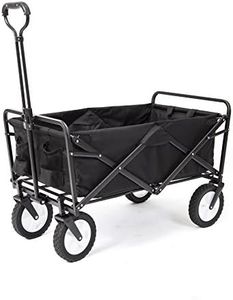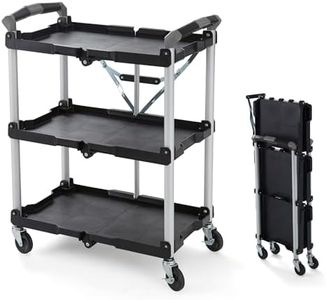10 Best Folding Carts 2025 in the United States
Our technology thoroughly searches through the online shopping world, reviewing hundreds of sites. We then process and analyze this information, updating in real-time to bring you the latest top-rated products. This way, you always get the best and most current options available.

Our Top Picks
Winner
ROSONG Collapsible Wagon Cart with Wheels Foldable - Folding Utility Heavy Duty Wagons Carts for Grocery Sports Garden Shopping Camping Wheelbarrows (Black, 120L)
Most important from
4107 reviews
The ROSONG Collapsible Wagon Cart is a solid choice for anyone needing a versatile, easy-to-store cart for activities like gardening, camping, or shopping. It supports up to 250 pounds, which is ample for most personal and outdoor uses. The wagon folds down compactly to about 22 by 10 by 7.5 inches and weighs only 12 pounds, making it convenient to carry and fit in a car trunk.
Its frame is made from strong metal with durable 600D fabric, ensuring it can handle heavy loads and resist wear from various weather conditions. The wheels are a standout feature: they rotate 360 degrees for smooth turning and can be detached for easy cleaning, which helps keep dirt outside your home. The rubber handle is ergonomic and extendable, making it comfortable to pull even when fully loaded. Assembly isn’t required, so it’s ready to use right out of the box.
While the cart is designed for adults and indoor or outdoor use, its size and weight limit may not be ideal for very heavy-duty industrial tasks. For everyday hauling needs, this wagon offers a good balance of durability, maneuverability, and portability.
Most important from
4107 reviews
Hikemoon 34'' Extra Long Collapsible Wagons Carts Foldable, 360LBS Heavy Duty Folding Beach Wagon Cart with Wheels, Portable Utility Outdoor Wagon for Grocery, Shopping, Garden, Sports, Camping, Black
Most important from
1225 reviews
The Hikemoon 34" Extra Long Collapsible Wagon is designed for those needing a spacious and sturdy folding cart. It stands out with its extra-long size, about 34 inches, which is 50% longer than most standard wagons, making it great for carrying longer items like folded tents or large groceries. Despite its size, it weighs just 14 pounds, which is quite light compared to other heavy-duty wagons. The metal frame is strong enough to hold up to 360 pounds, so it can handle a variety of loads without trouble. The durable 600D Oxford fabric is waterproof and tear-resistant, plus it’s removable for easy cleaning, which adds to its convenience. The handle is adjustable and extends up to 42 inches, so users of different heights can pull it comfortably, and the front wheels rotate 360 degrees for smooth turning and easy maneuvering, even in tight spaces.
Assembly is simple—just attach the wheels and handle—and folding it down is quick, saving up to 80% of storage space when collapsed. The folded size is compact enough for most car trunks or small storage areas. Two mesh cup holders on the wagon add a handy touch for everyday use. On the downside, the wagon’s height is about 12.5 inches, so very tall or bulky items might not fit well vertically. Also, while it’s lightweight, the metal frame and larger size mean it may take up a bit more room during transport compared to smaller folding carts.
This wagon is a solid pick for outdoor activities like camping, gardening, or sports, as well as for shopping trips where a bigger cart is useful. Its strong build, large capacity, and easy handling make it a practical option for those who want a reliable, portable folding wagon.
Most important from
1225 reviews
Radio Flyer Wagon for Kids, Baby Stroller, Outside Toys for Toddlers 1-3, Rolling Cart, Beach Cart with Wheels, Trav'ler Stroller Wagon with Protective Cover, for Ages 1+ Years
Most important from
5602 reviews
The Radio Flyer Stroller Wagon is designed for families who need a versatile and sturdy wagon for their toddlers. It excels in its weight capacity, supporting up to 120 pounds, which allows it to accommodate two kids comfortably. The dimensions (12"D x 31"W x 41"H) are spacious enough for kids to sit and move around freely, and the fabric material is durable and easy to clean. This wagon features four pneumatic wheels, ensuring a smooth ride on various terrains whether you're on a trail, at the beach, or navigating a park.
The handle design is user-friendly with separate handles in the front and back that are both adjustable and collapsible, catering to both pushing and pulling preferences. Its folding mechanism is a standout, making it easy to fold and transport with a convenient travel case for storage. Added safety features such as a rear foot brake, 5-point safety harness, and UV-protective canopy provide peace of mind for parents.
The wagon is relatively heavy, weighing 37 pounds, which might make it challenging for some users to carry or transport when folded. Assembly is required and may take about 30 minutes, which might be a downside for those who prefer a no-setup option. Despite these minor drawbacks, the wagon's strong build, comfort, and safety features make it a top choice for families looking for a reliable and versatile stroller wagon.
Most important from
5602 reviews
Buying Guide for the Best Folding Carts
Folding carts are incredibly useful for a variety of tasks, from grocery shopping to transporting heavy items. When choosing a folding cart, it's important to consider several key specifications to ensure you select the best one for your needs. Understanding these specifications will help you make an informed decision and find a cart that is both functional and durable.FAQ
Most Popular Categories Right Now
